📖 Creating Your First WordPress Page with Elementor – Step by Step Guide
Elementor is one of the most popular and user-friendly page builders available for WordPress. It requires zero coding knowledge and offers a powerful drag-and-drop interface, making website creation accessible to everyone. Whether you’re a beginner or an advanced user, Elementor provides flexibility and ease of use for designing professional web pages.
In this guide, we will create our first page using Elementor, step by step. (Since I have both Elementor and the Classic Editor installed, I’ll show you where to find the “Edit with Elementor” button whenever needed).
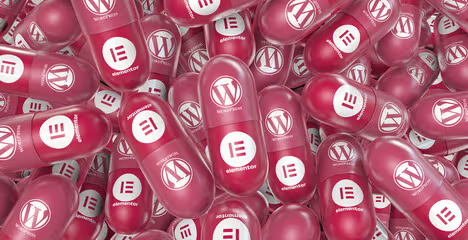
🚀 Step 1: Create a New Page in WordPress

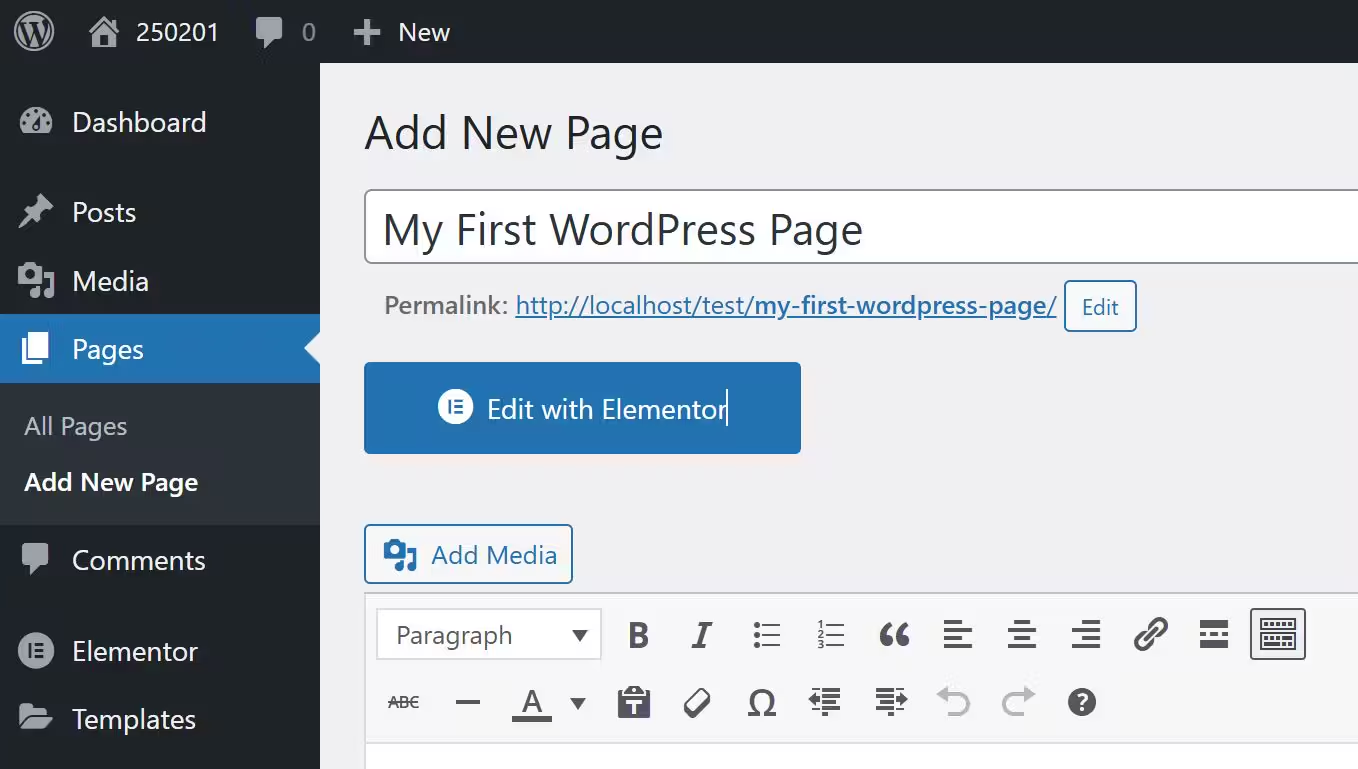

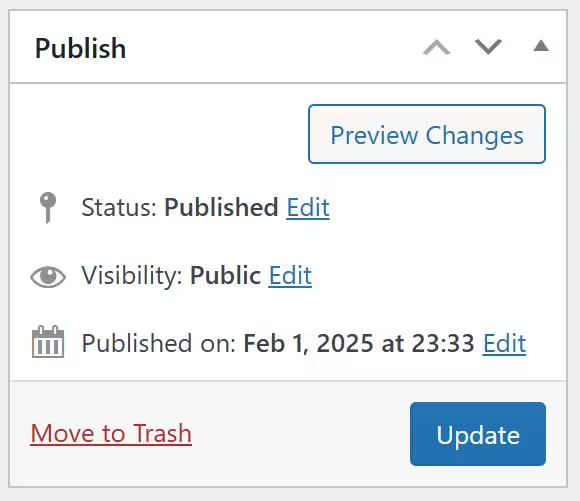

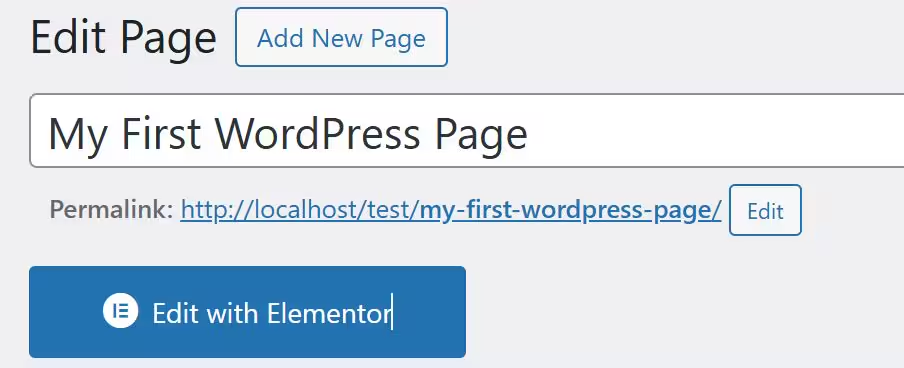

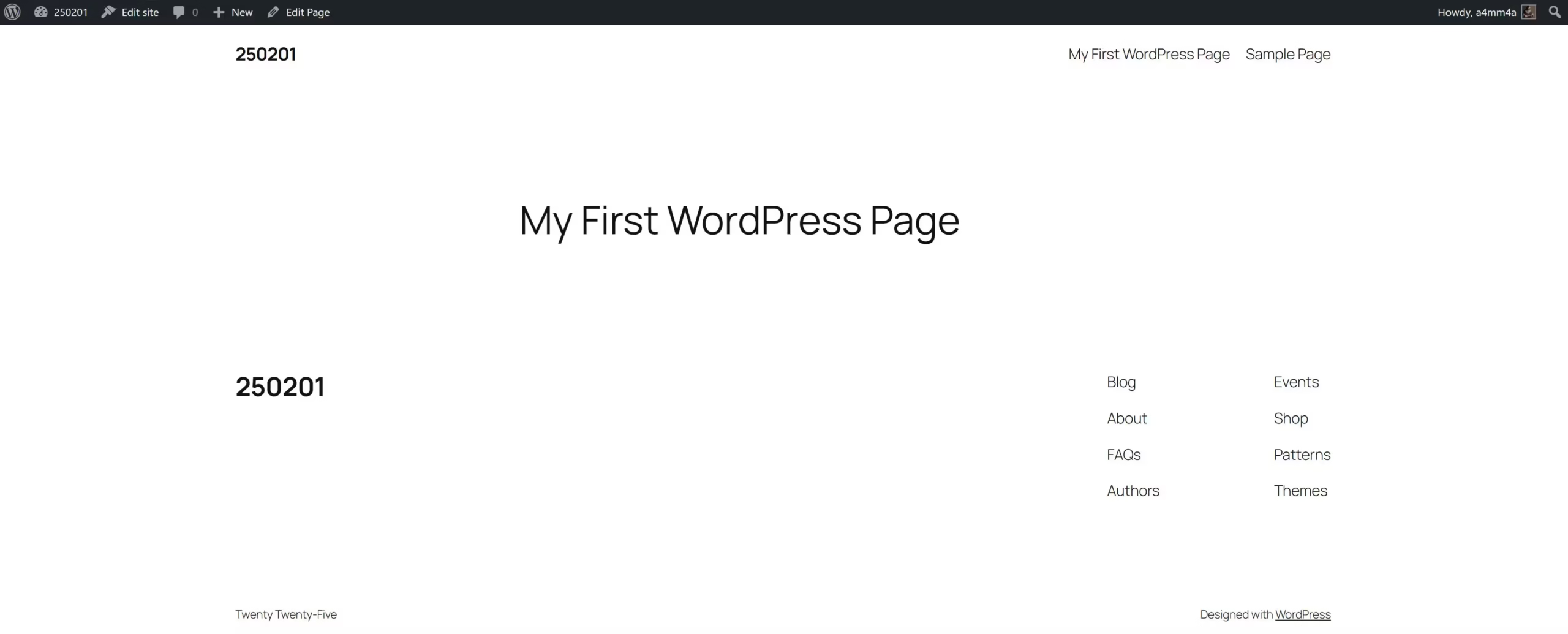
🎨 Step 2: Open the Page in Elementor
5️⃣ Click the “Edit with Elementor” button at the top of the editor.

6️⃣ This will open the Elementor page editor, where you’ll see a blank canvas on the right and Elementor’s menu panel on the left.
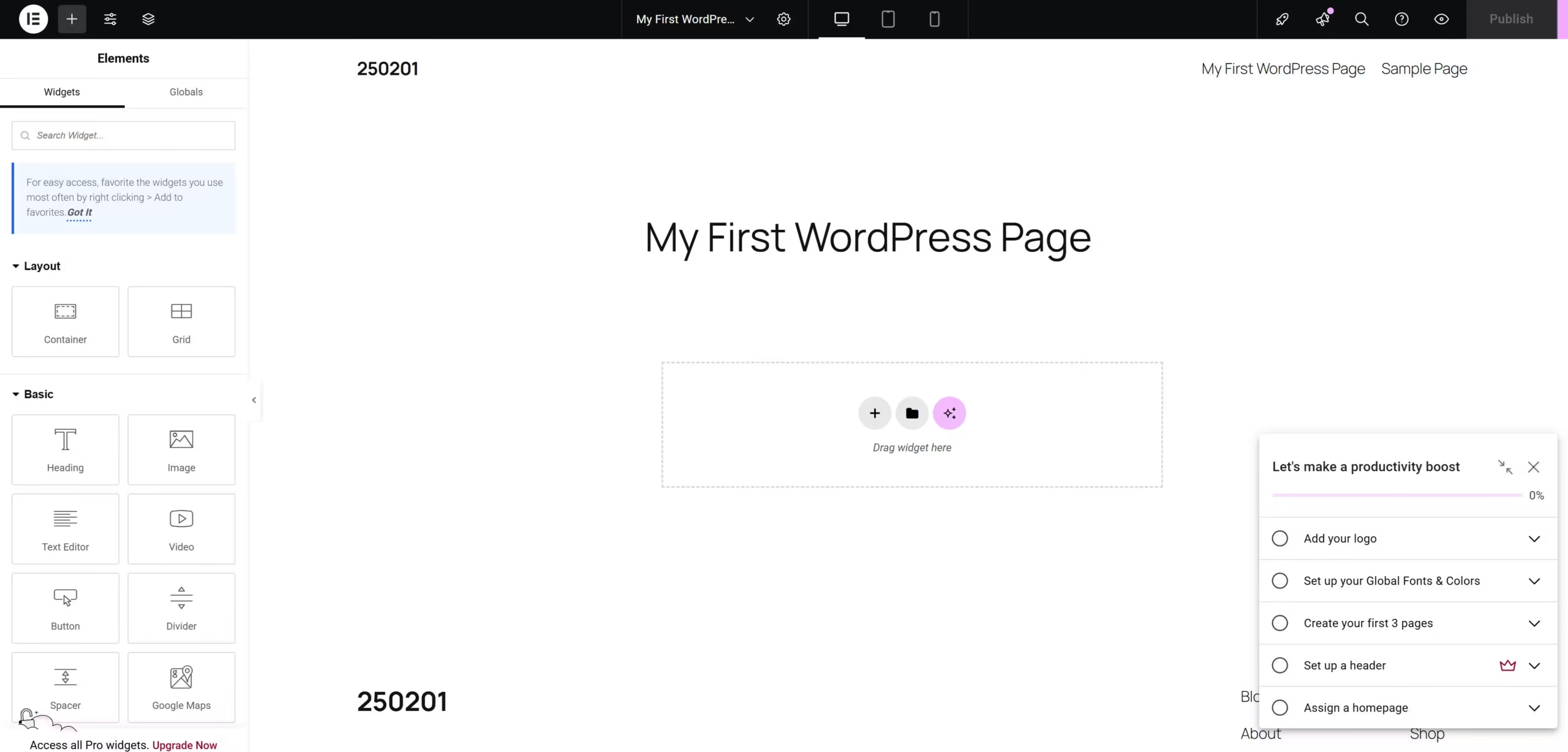
🏗 Step 3: Add Your First Section and Structure
7️⃣ Click the “+” button in the Elementor editor to add a new container.
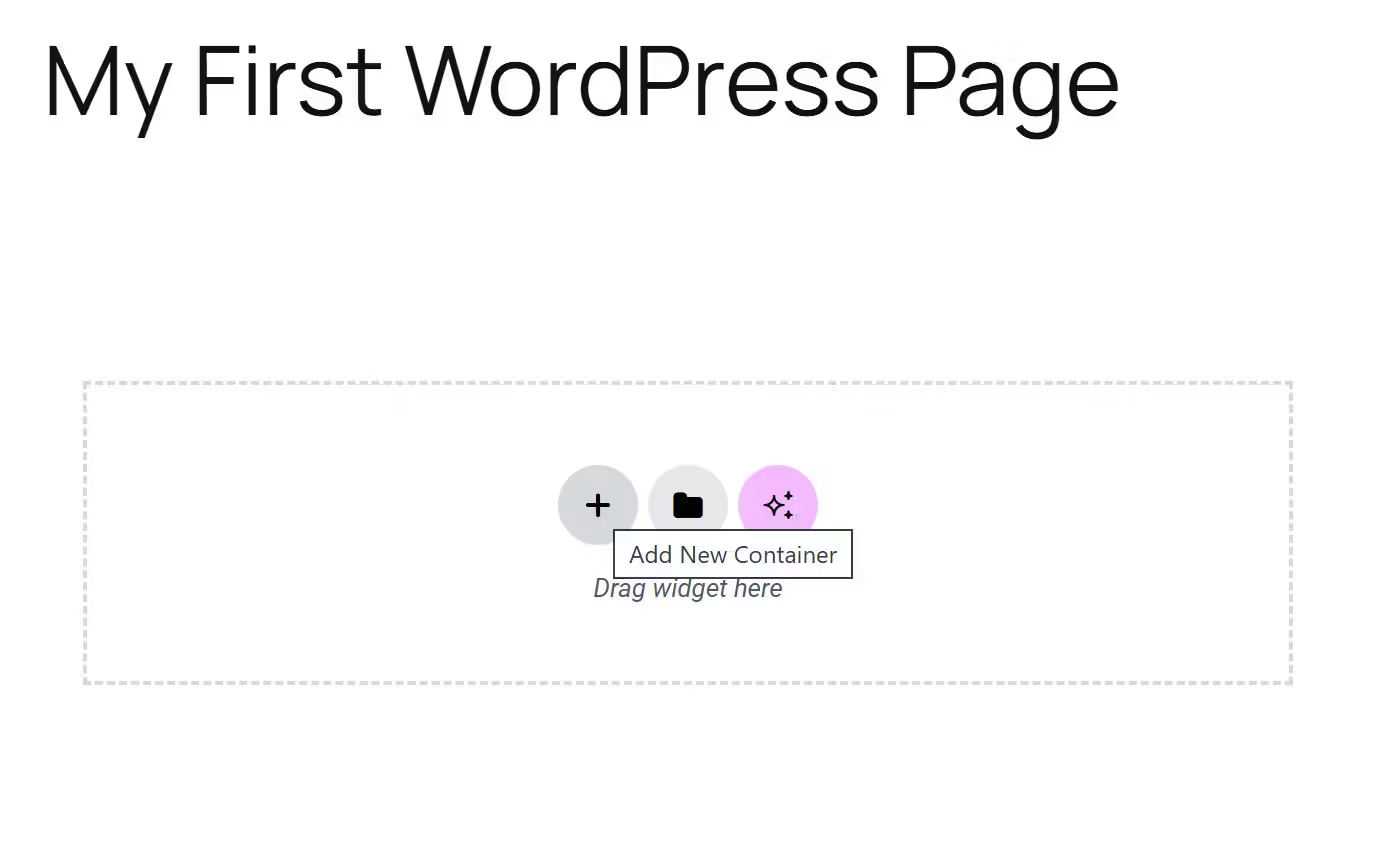
8️⃣ You will see two layout options:
- Flexbox (recommended for modern layouts)
- Grid (useful for multi-column structures)
- For this tutorial, we’ll select Flexbox.
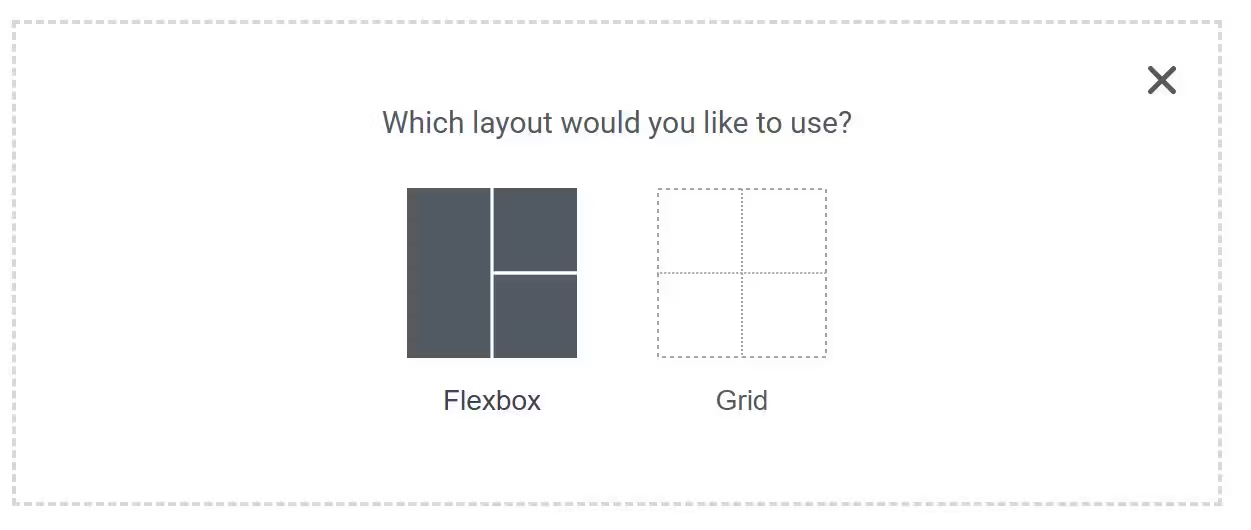
9️⃣ In the “Select Your Structure” tab, choose the first layout (Column Direction) to create a single-column section.
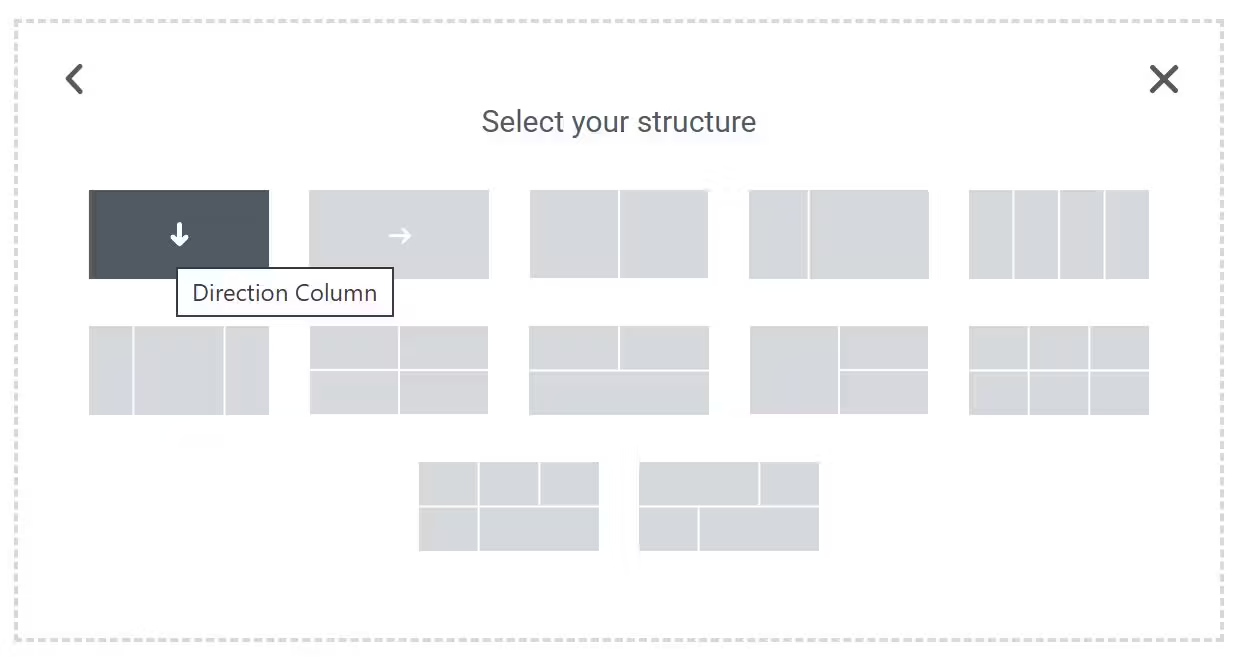
📝 Step 4: Add and Customize Your First Heading
🔟 Click the “+” button in the middle of the section to add an Elementor element.

1️⃣1️⃣ The Elementor elements list will appear on the left side.
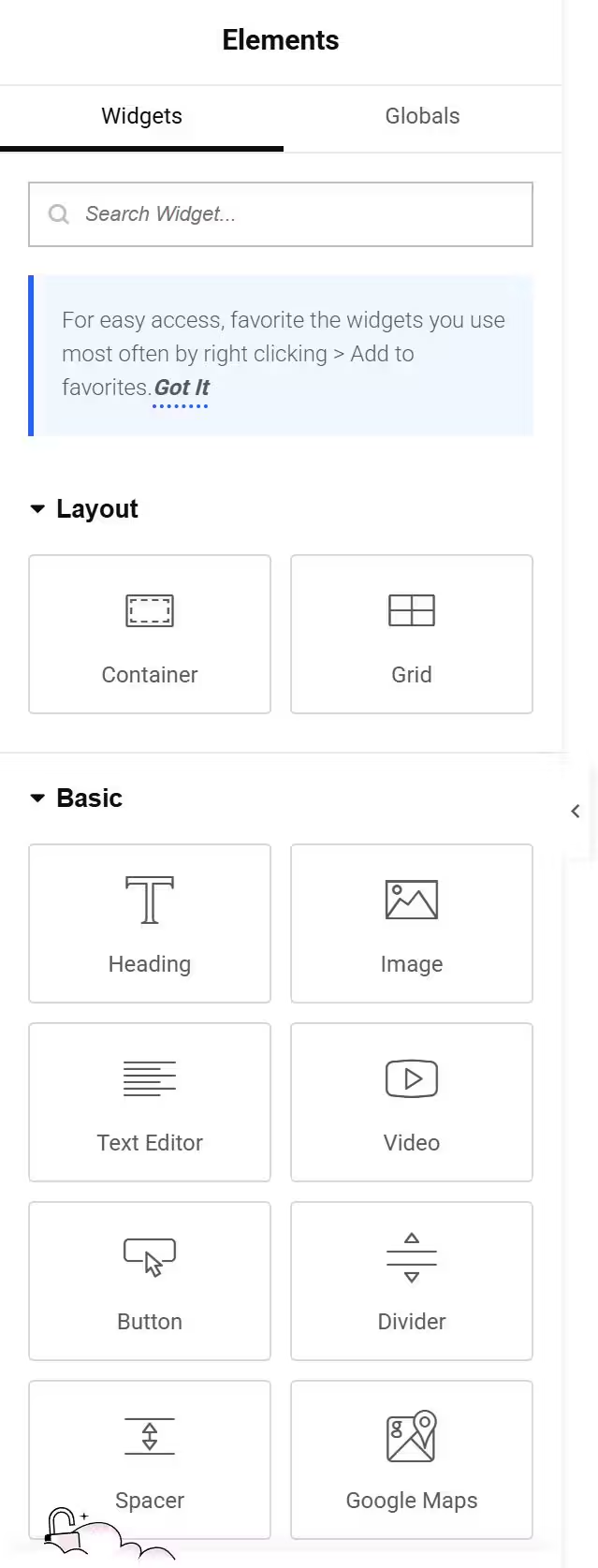
1️⃣2️⃣ Drag the Heading element and drop it inside your newly created section.
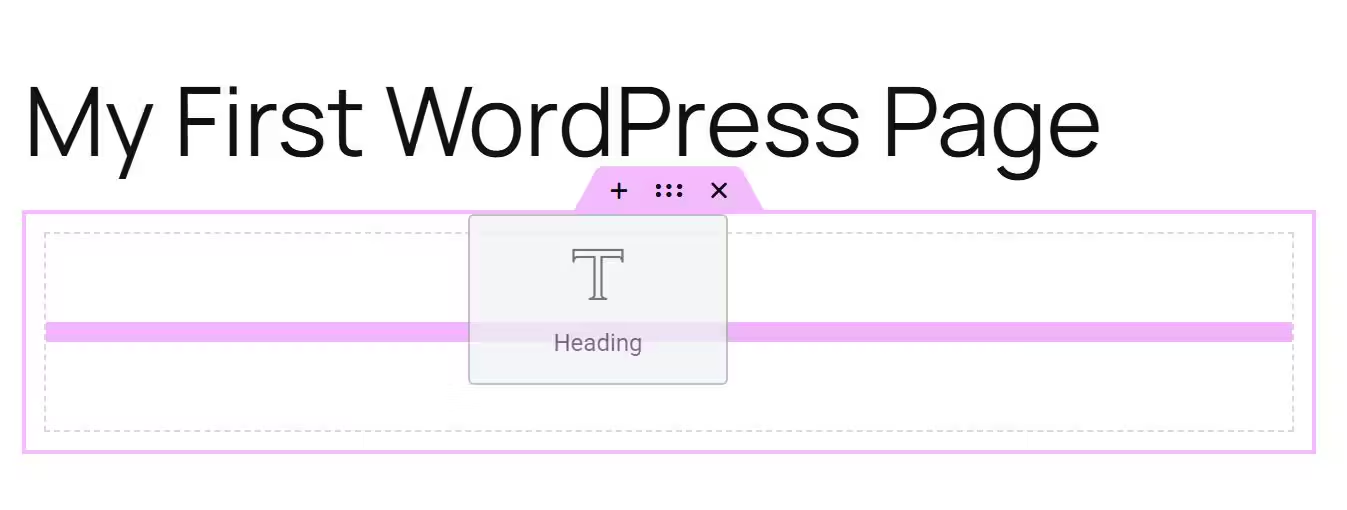
Customizing Your Heading Element
1️⃣3️⃣ On the left panel, you will see the “Edit Heading” menu with three tabs:
- Content Tab → Adjusts the text, heading size (H1, H2, H3, etc.), and alignment
- Style Tab → Controls colors, typography, spacing, and shadows
- Advanced Tab → Provides margin, padding, and motion effects for more customization
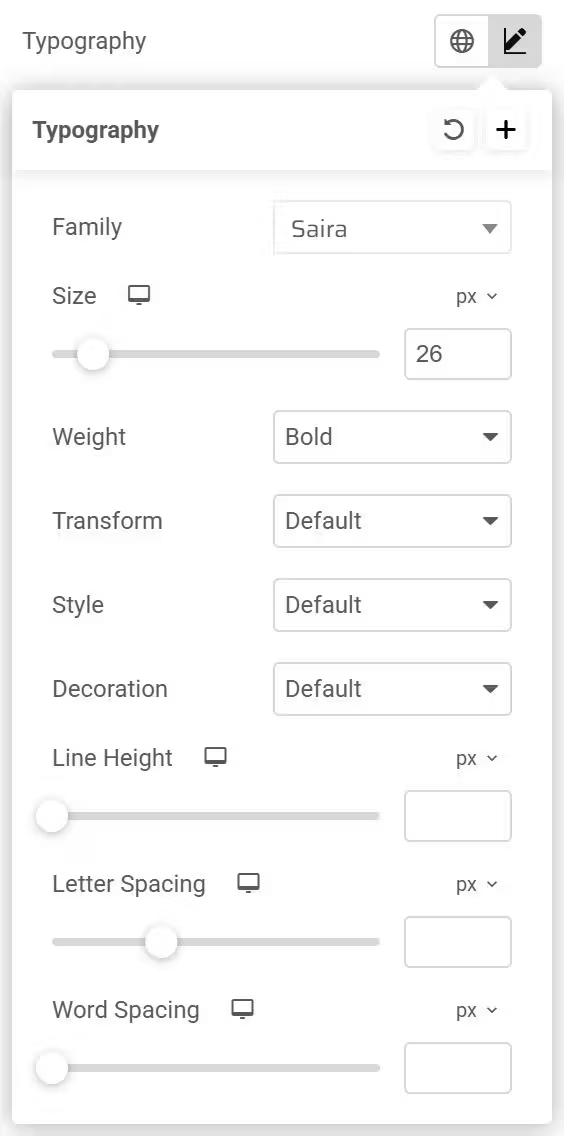
1️⃣4️⃣ In the Content Tab, change the text to “Online SEO Course” and set it as H1.
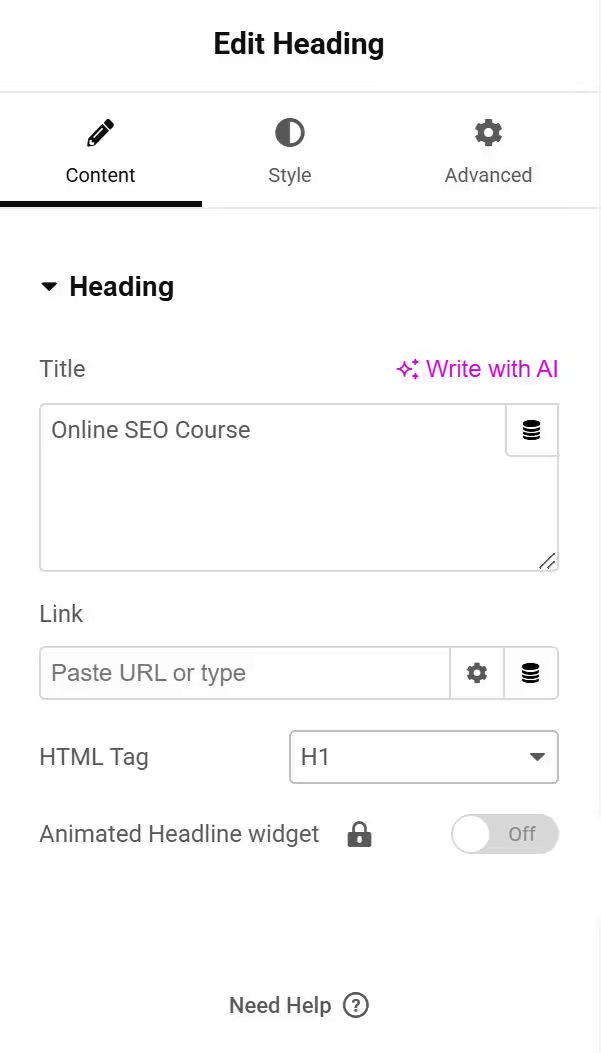
1️⃣5️⃣ Switch to the Style Tab:
- Set the alignment to center
- Change the text color to #0074A5
- Go to Typography → Font Family → Saira
- Set the Font Size to 26px and Weight to Bold
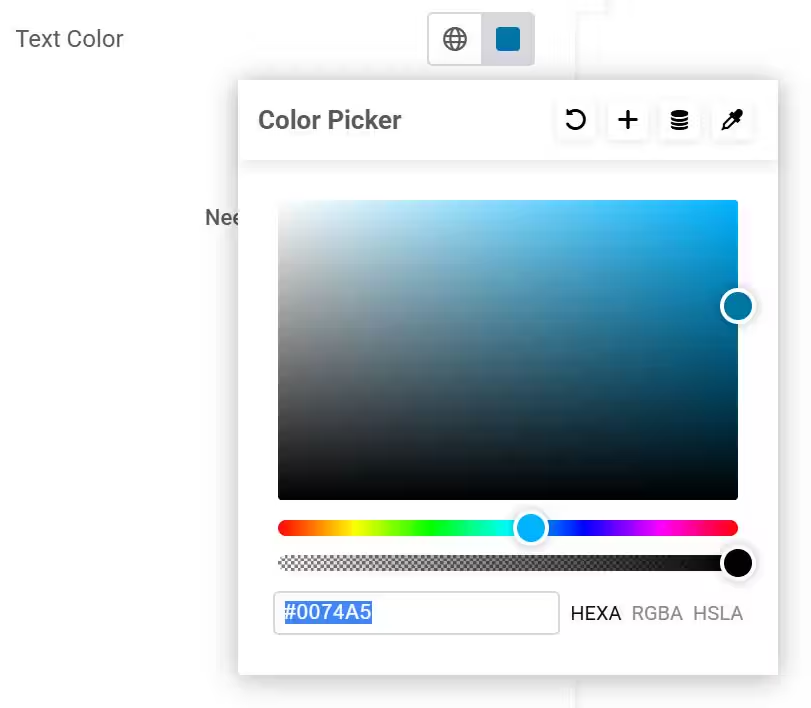
✍ Step 5: Add a Text Block for Explanations
1️⃣6️⃣ Click the “+” button again to add another element.
1️⃣7️⃣ Drag the Text Editor widget and drop it below the heading.
1️⃣8️⃣ Type in some explanatory text about your course, services, or website.
🖼 Step 6: Add Images to Your Page
1️⃣9️⃣ Click the “+” button and drag an Image widget to the section.
2️⃣0️⃣ Upload or select an image from the Media Library to make your page visually appealing.
📱 Step 7: Check Responsiveness

2️⃣1️⃣ To ensure your page looks great on all screen sizes:
- Click the Responsive Mode icon (at the bottom left of the Elementor panel).
- Toggle between Desktop, Tablet, and Mobile views.
- Adjust fonts, spacing, or layout if needed to enhance mobile-friendliness.
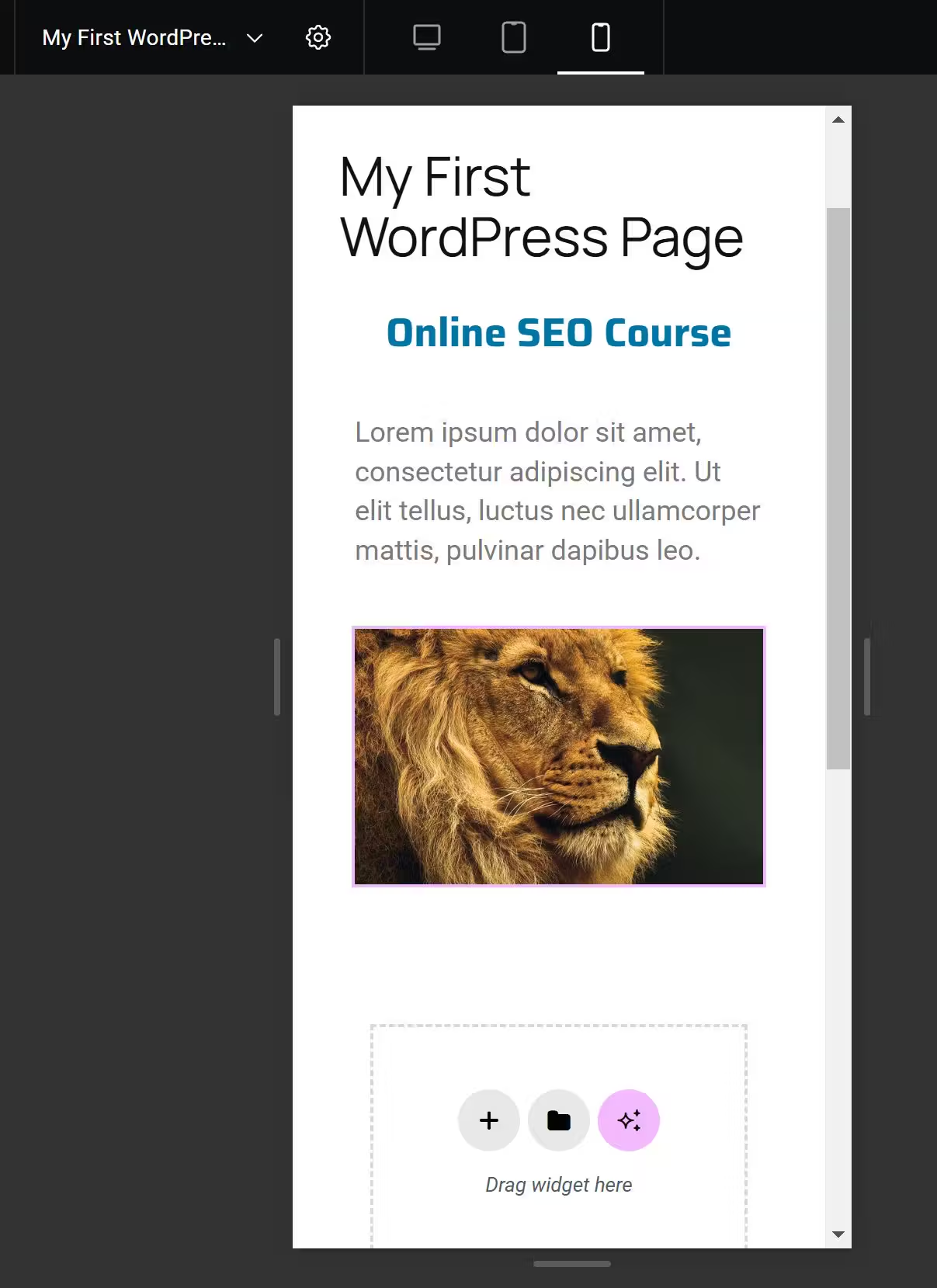
🏁 Step 8: Publish and Exit Elementor
2️⃣2️⃣ Click the Publish button at the top right to save your page.

2️⃣3️⃣ Once published, click the Menu icon (top left) and select “Exit to WordPress” to return to your dashboard.
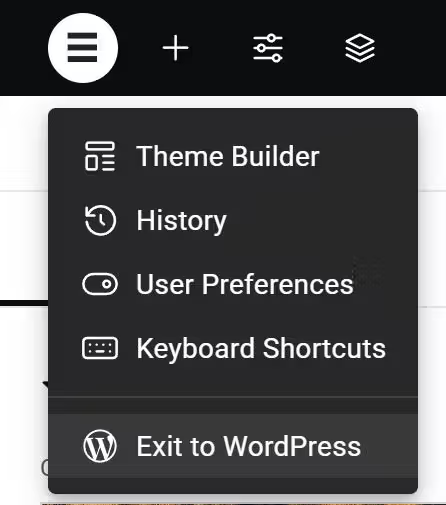
🎉 Your First Elementor Page is Live!
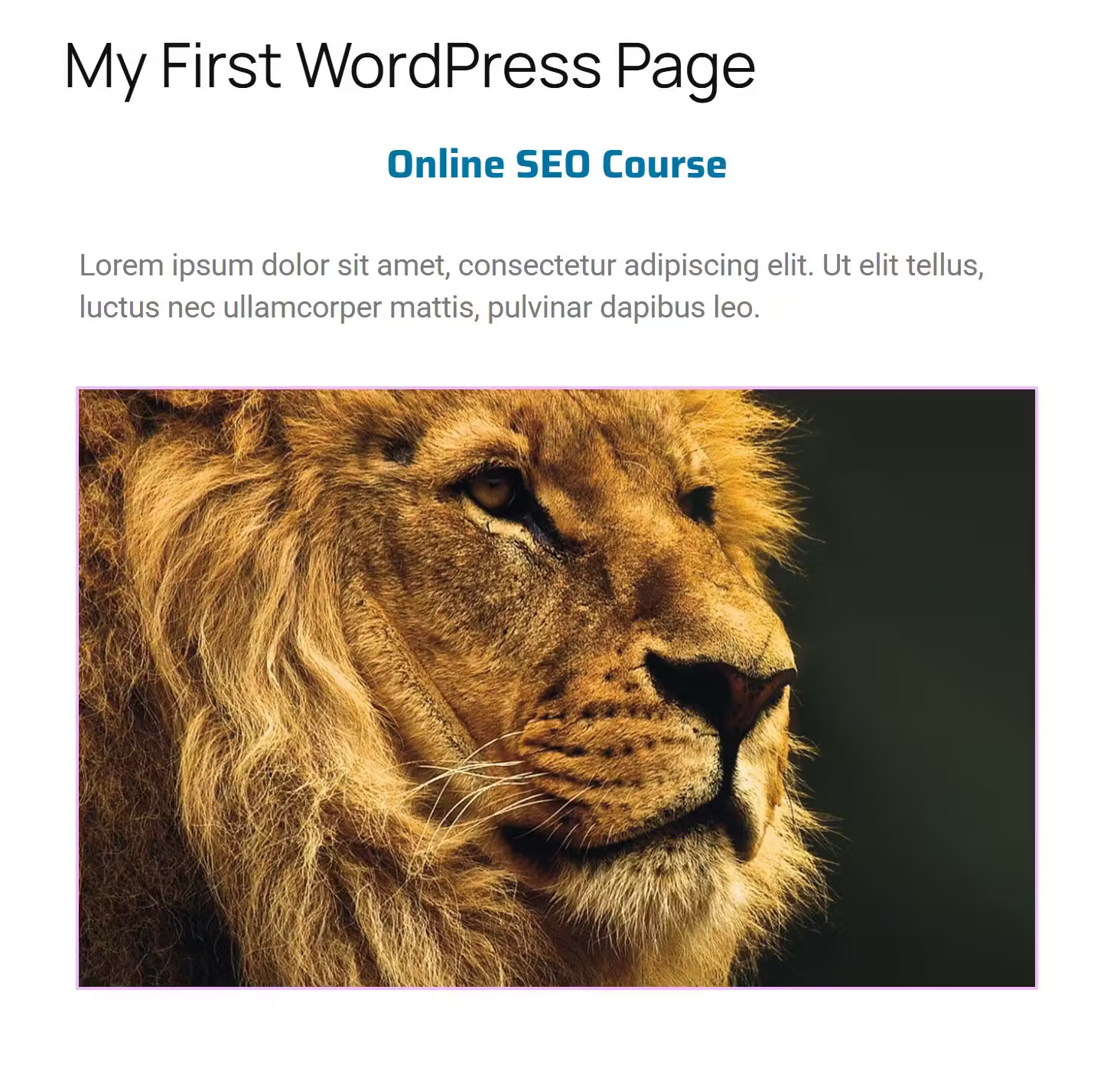
With these steps, you have successfully created and designed your first page using Elementor. Now, visit the frontend of your site to see the page you just built! 🚀
🚀 Next Step: Getting Started with SEO in WordPress



Let’s take your WordPress website to the next level by ensuring it’s SEO-optimized and ready to rank!
